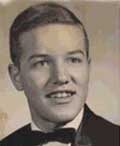RACE:MISSISSIPPI
THE BACKGROUND OF THE VIDEO
JANE ADAMS
The Delta of the lower Mississippi River is one of the few regions in the United States where a black majority has lived continuously since the area was settled. Out of slavery, crossed by race and ethnicity, the "white" minority set up one of the most repressive regimes in America, rivaling apartheid in South Africa in its strict adherence to the racial "line". Religion, class, and gender further divided, and sub-divided, the people who lived in the region. In the 1960's and 1970's the legal forms of segregation were finally destroyed.
In the summer of 2000, my husband, photographer D. Gorton, and I returned to Mississippi to ask people about their memories and judgments of the civil rights era. Both of us knew Mississippi, and the Delta, well--D. as a white native of Greenville, Mississippi, and a civil rights worker, and myself as a volunteer in the civil rights movement in 1964 and 1965. I came to the project after many years research on the transformation of American farming and teaching anthropology. D.'s career as a photojournalist brought his keen eyes and deep knowledge of photography to the project.
We interviewed the people in this video that summer: Hoover and Freeda Lee, Chinese-American grocers in Louise, with Hoover the seemingly unlikely mayor of Louise; Horace Harned a farmer and leader in Mississippi's white resistance to desegregation; Alyene Quin, a leader in the McComb civil rights movement whose home was dynamited by the Ku Klux Klan while her children slept; and Betty Furniss, a former sharecropper in Coahoma County and organizer of a white private school.
We spoke about many things with them, but we knew that we had to find out more about a key issue: race -- what it means, how each individual learned to distinguish themselves from others, how it shaped their relations with other people. The idea of "race" is not a simple one. It blends with ideas about ethnicity and culture. It is laden with social implications: superiority and inferiority, intimacy and distance, inclusions and exclusions. It is cross-cut by class; it means something different in the North and in the slave-holding South. Men and women confront the color line in different ways. People who were neither entirely "white" nor "black," like Chinese, Italians, Lebanese, and Jews, experienced the color line differently from their Protestant white and black neighbors.
In the United States, race has long been one of the major ways people have created social and political solidarities. It has been a source of many of our deepest conflicts, as well as a foundation for powerful identities.
I teach a course at Southern Illinois University called "America's Diverse Cultures." What these five people told us about race, we thought, would help classroom discussion of this fraught and complex issue.
D. set to work making a film. We had done the interviews with two digital video cameras, in studios we built in motel meeting rooms around Mississippi. We had acquired Apple Computers and a film editing program, Final Cut Pro. Additionally, we used portable scanners and laptop computers to acquire images, papers, and other ephemera while on site. Scanning technology is a particular blessing for it relieved me of the burden of possibly losing priceless heirlooms as I had copied them in the past, far away from the site.
We envisioned this pilot project as an experiment: How do we combine my anthropological training and D.'s photographic skills in collaborative research using new digital media? And how do we create rich content, using materials fresh from the field, to help students understand the issues scholars investigate?
This "essay" presents the materials we created for my class: the 23 minute video; the didactic essay concerning the questions raised by the excerpts; a brief bibliography; and a note on methods. We have added some photographs and other information from our continuing field work in 2001 and 2002.
We will, in the future, explore other aspects of our research in this site.
-Jane Adams, Carbondale, Illinois, July 2002
© Jane Adams & D. Gorton 2002 |
|















